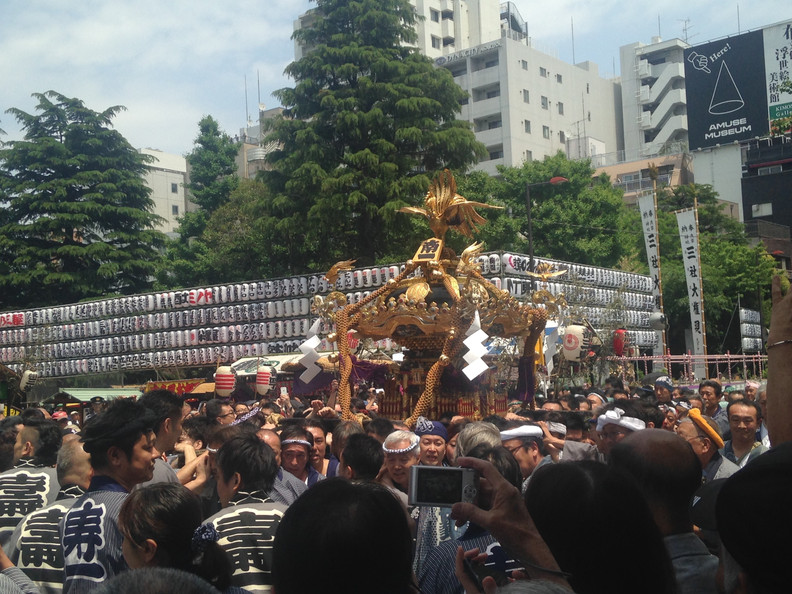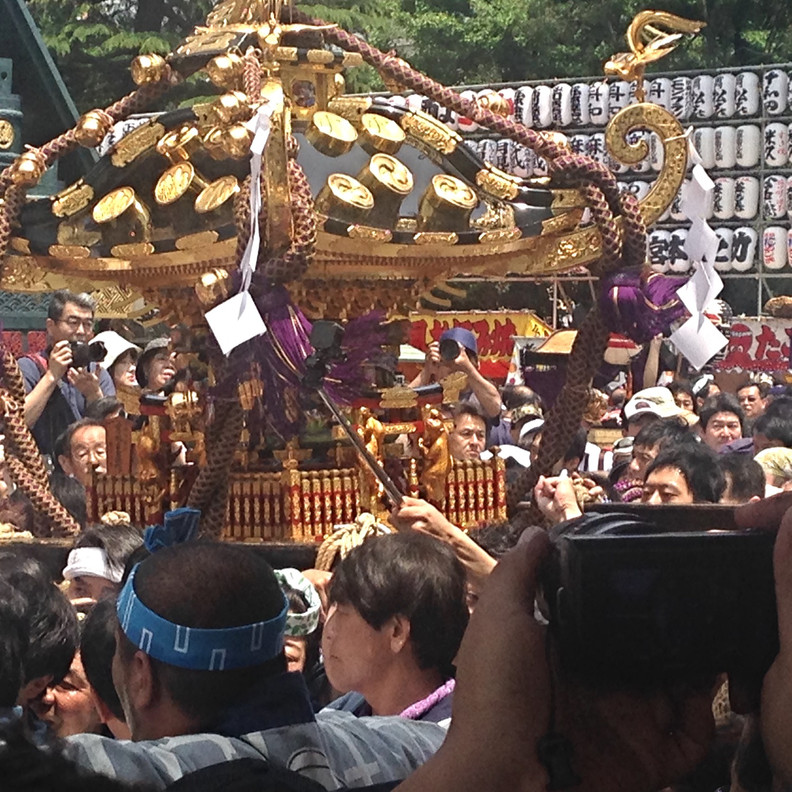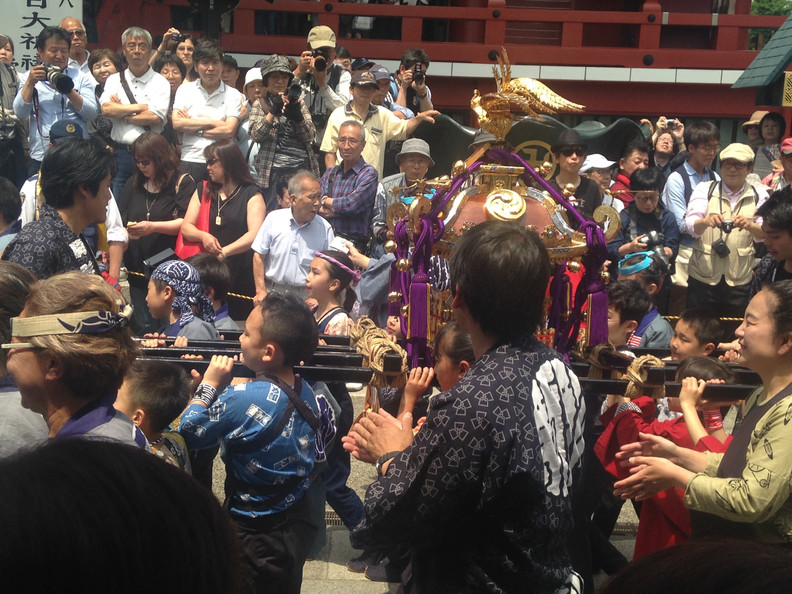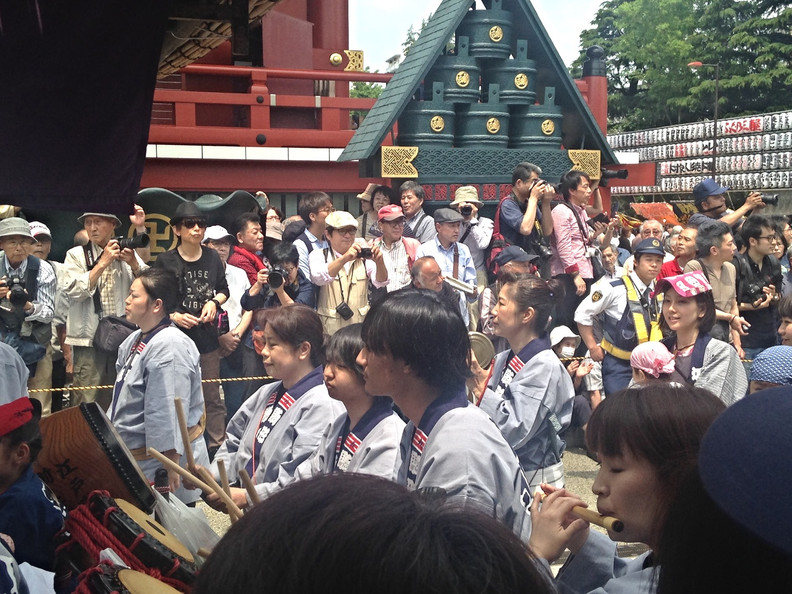Saturday, May 14, 2016
Sanja Matsuri is centered around the third Sunday of every May and is held in honor of the three men who established and founded Sensō-ji. It is one of the largest and supposedly wildest of the Shinto celebrations in Tokyo.
The festival's three-day celebration begins on Friday with a large parade. This famous 19-block grand procession goes down Yanagi Street to Asakusa Shrine and is known for its participants—geisha, musicians, performers and dancers—all wearing traditional Japanese attire. In the evening, six mikoshi (smaller local shrines) from the most central neighborhoods are sent parading through the streets on the shoulders of several dozen people.
On the following day, Saturday, approximately 100 mikoshi from the 44 Asakusa districts are carried through Nakamise-dōri to Asakusa Shrine where Shinto priests bless and purify them for the coming year. When the ceremony is completed, they are then carried back and paraded through their respective neighborhoods.
The most important event occurs on Sunday. This is the procession of the three huge, elaborate Asakusa Shrine-owned mikoshi early Sunday morning to the shrine. They represent the three founders of Sensoji. The three shrines then head out to bestow blessing to all 44 districts of downtown and residential Asakusa. When evening falls, the three shrines are brought back to Asakusa Shrine in another grand procession that lasts late into the night.
Due to time constraints we had to choose one day to visit this festival and chose Saturday so that we could see the excitement of the various groups from each neighborhood as they carried in their small shrines for the blessings by the priest. Teams compete for the most spirit.
The shrines may not have been all that huge, but the spirit of those carrying the shrines and representing their neighborhoods was enormous. And carrying the shrines is a feat of endurance as most of them are pretty heavy looking and it was really hot.
Some groups consisted of children, while others were made up of hot, sweaty adults. But each group carried the shrine into the shrine area while shaking it up and down. Once they arrived in front of the priests they would lift the shrine up and shake it . And all the while chanting.
Some of the shrines consisted of musicians playing their instruments and were not carried, but pushed along on wheeled booths as they walked along behind playing music.
The area was filled with adrenaline—and confusion reigned too, as the cops tried to make some order of the chaos. Shrine participants paraded past, while clueless tourists—all trying to get the perfect picture—wandered everywhere. It was all very exciting.
Then after an hour or more of watching the entrance of the shrines, we took off in search of some of that great festival food.








No comments:
Post a Comment
Thank you for your comment.